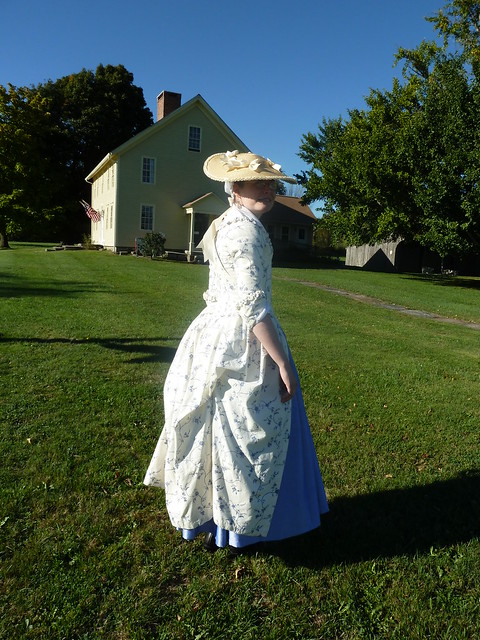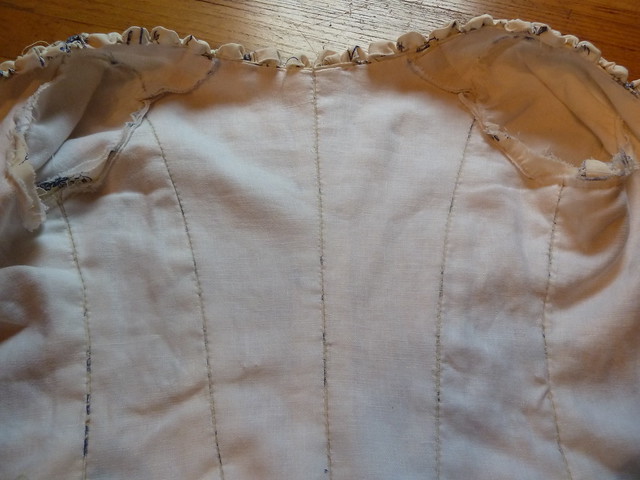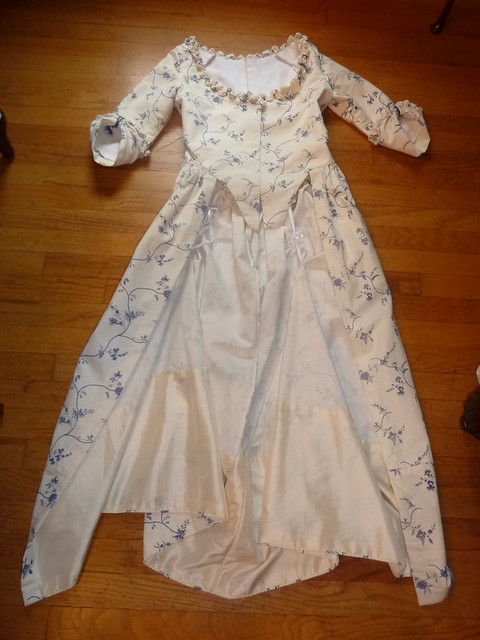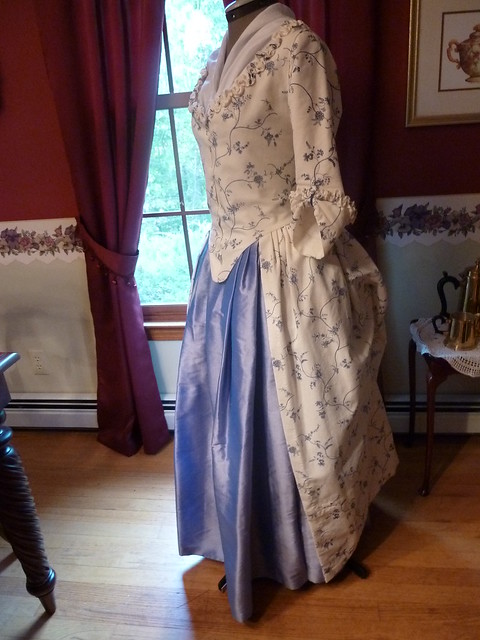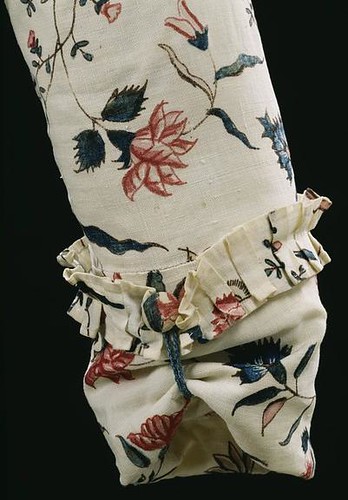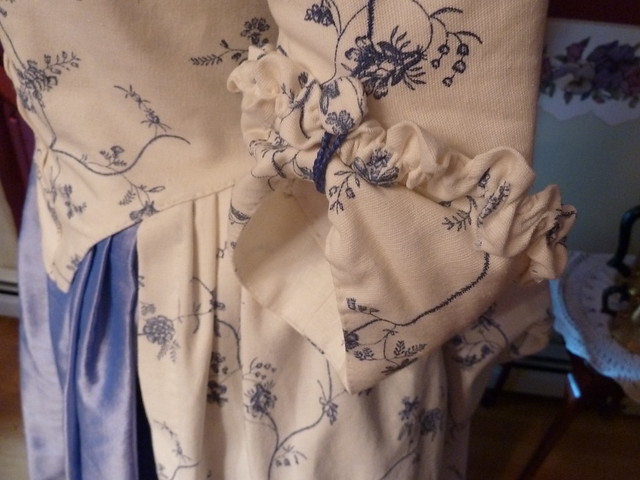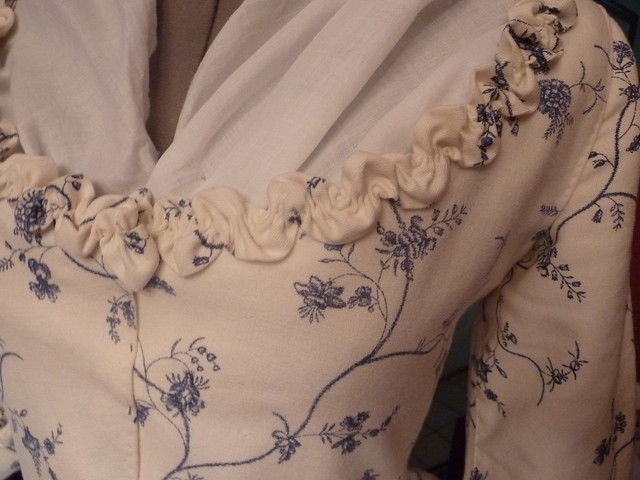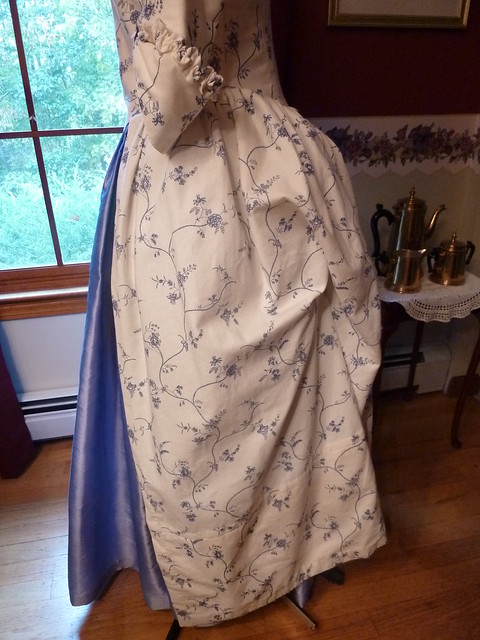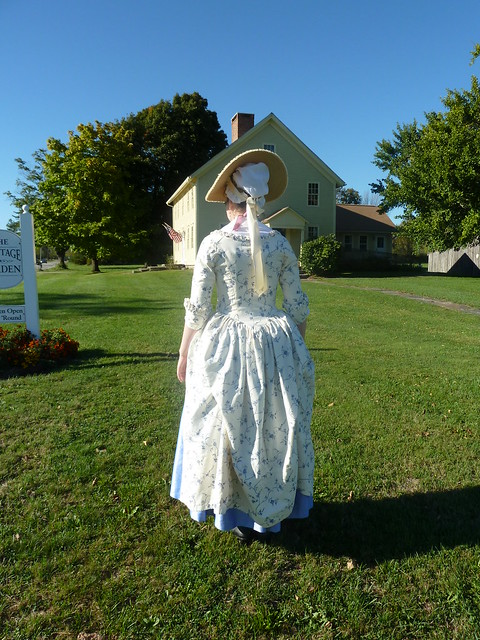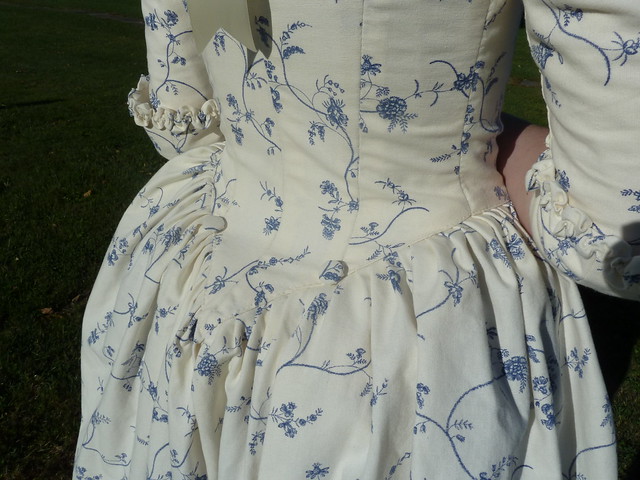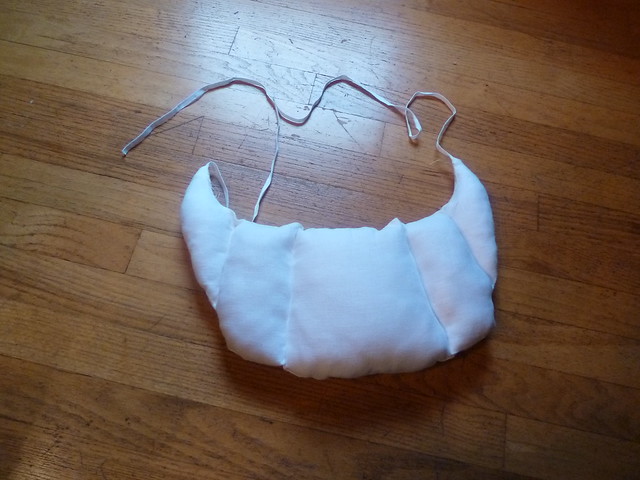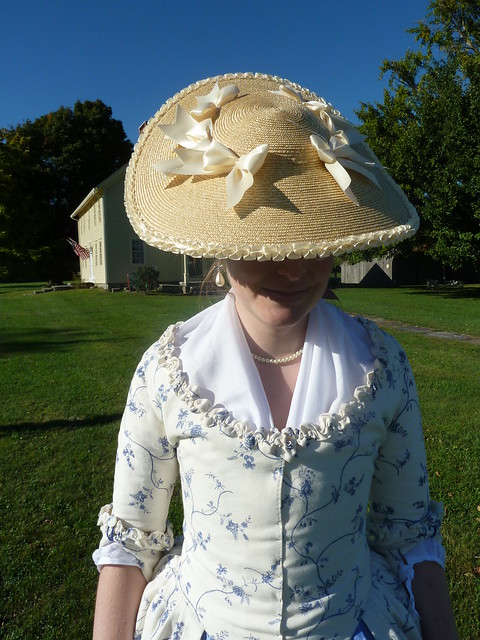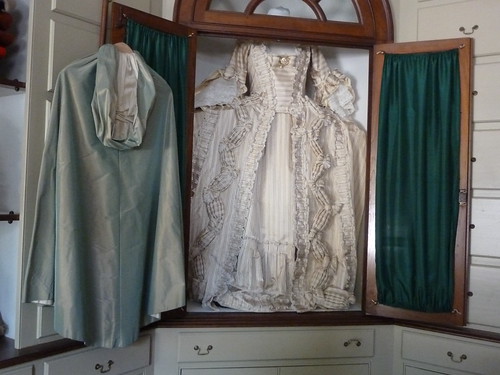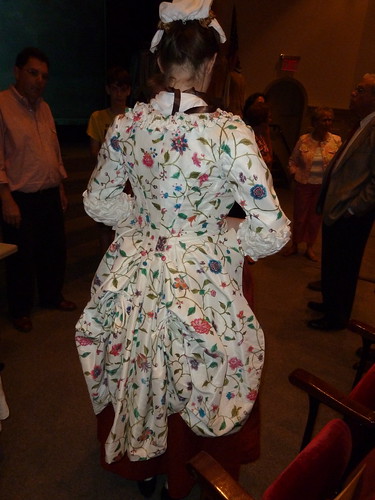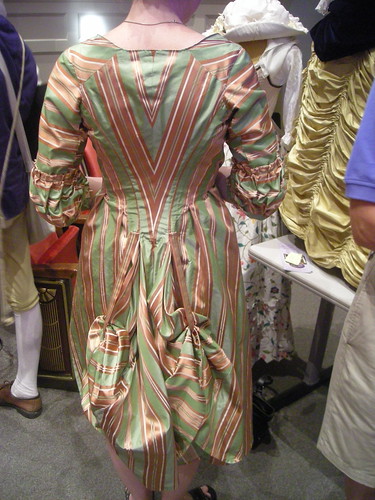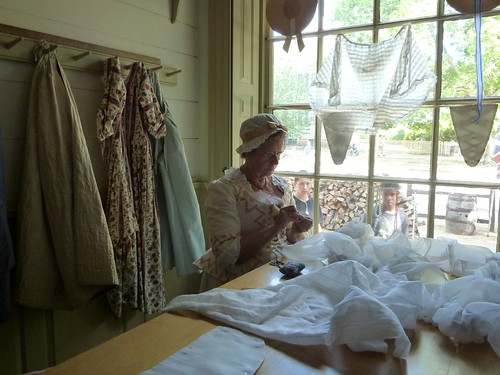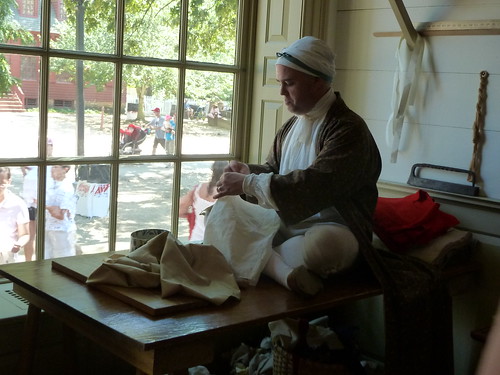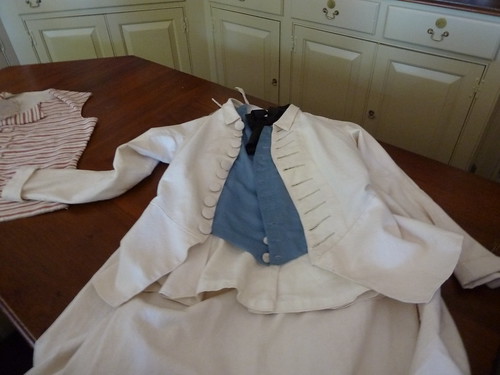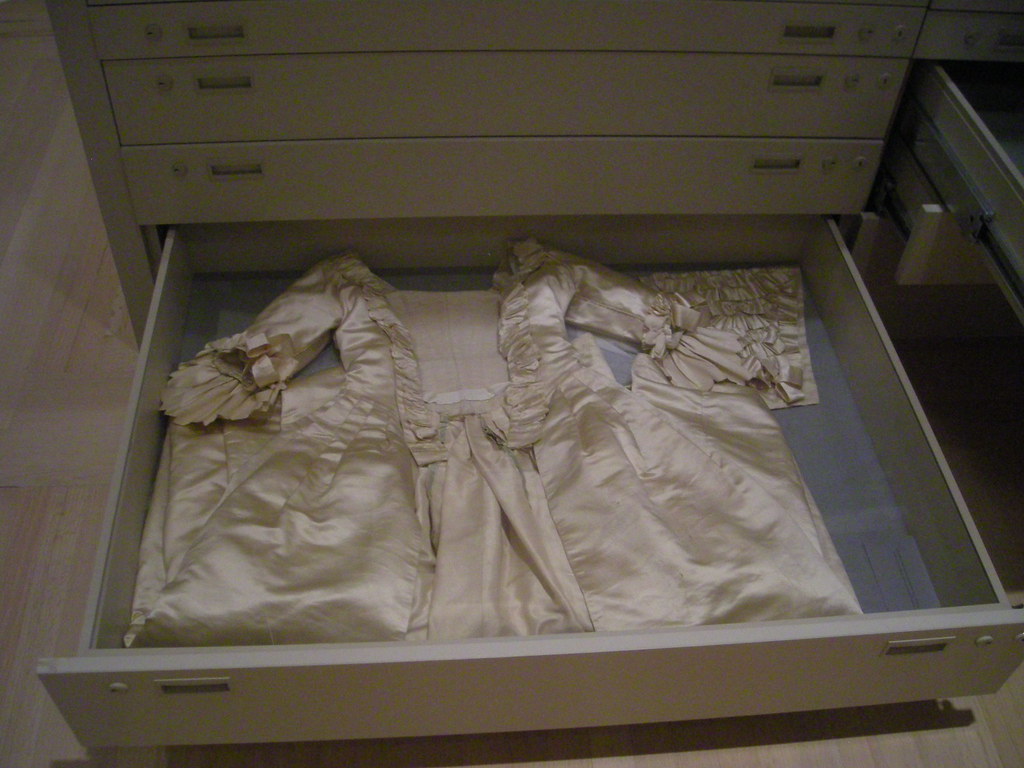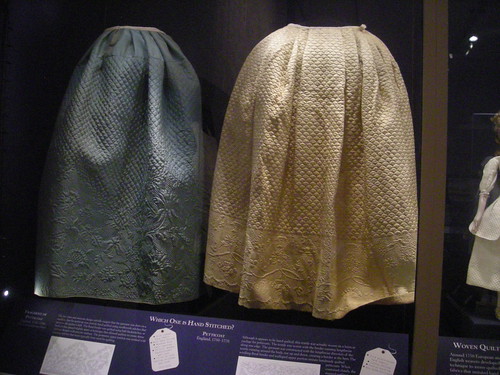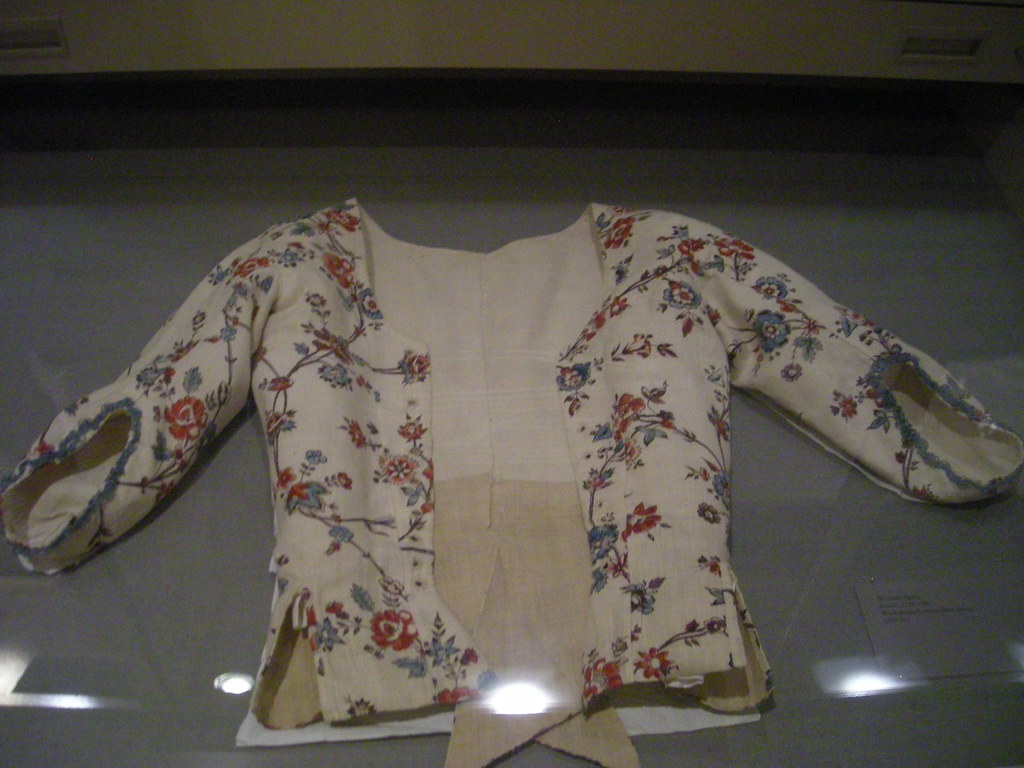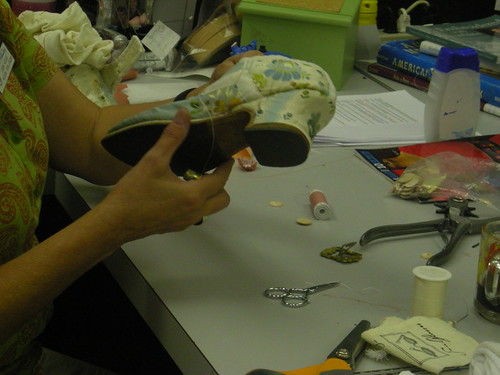We've just done another purge of the costume closet, since space is getting tighter and we both have too many pieces we're not wearing often enough to justify keeping them. That, and we're both in the midst of plotting new sewing adventures and need the space (and the money!) to make them happen. So here's another chance to add something new to your own period wardrobes!
1) The first gown up for grabs is the first gown I ever completely hand-sewed for myself. I know I said that about the blue wool gown I parted with last year, but I was wrong - I totally forgot about this one! (yes, that's how long it's been since I've worn it!) This is an Italian or "quartered back" style gown dated 1775-1785, scaled up from the gown on pages 37-9 in Patterns of Fashion. The cuff detail was copied from an Indian chintz caraco with an identical date range that is in the V&A. For further details on the cut, construction, trim, and fabric choice, and to see additional photos, see the gown's Threaded Bliss post from 2010. Sizing and condition information can be found on the Ebay listing.
2) I have to admit that it's hurting my heart to have to part with the second gown, but I'm doing it for the simple reason that it no longer fits me. I debated long and hard for a couple of years whether or not I wanted to pick it apart and remake it because I just adore the fabric color and have never seen anything like it since, but in the end, I feel like that would be wasting all the hours of work that went into hand-sewing the entire thing. Yes, picking it apart was the period solution to the size-change problem, but it just feels silly to me to throw all of that work and time away when I know someone else could use it. So here goes...taking the plunge and letting it go...*sniff*
This is a lavender silk taffeta gown with a matching petticoat. Both gown and petticoat were cut to go over a very small hoop which is not included, but you could very easily make a pair of small hip pads (we're talking maybe only an inch or two on each hip, that's all it needs) to fill in the skirts if you want to. To be totally honest, though, when I just put the gown on the mannequin to take measurements, I didn't even notice any difference in the hem length at the sides, so you could even get away without any skirt supports. The coordinating hat is not for sale (though I'd be happy to make you something similar if you really wanted it!).
The gown is pleated in back and trimmed with simple box pleated self-fabric around the neckline and sleeves. The full run-down on the details is in the Threaded Bliss post, with all information about sizing and condition in the Ebay listing.
3) Next up is a Regency gown that Ashley made, and it, too, is entirely hand-sewn. This sadly never even got a Threaded Bliss post because she only wore it once to a ball and we didn't get any decent pictures then. It's based on an 1823 gown with a net overlay in Costume in Detail, pgs. 119-120; we just simplified the sleeves and didn't do the padded hemline detail to bring it forward in time to about 1810-1815. The photos don't do the true color justice - it's a pale blue shot with a sort of brushed gold tone that's really pretty when the light catches it. Check out the Ebay listing for more photos and for sizing information.
4) Finally, Ashley has also decided to part with her gold linen jacket. This was an old stand-by for her for years and she still loves it, but it no longer fits and she has a couple of newer jackets to replace it with, so it's time to let it go. This is the most worn of the pieces we're listing, but it's still in great shape and has many more years of life left in it. It's absolutely ideal for a camp-following or working-class impression! Like all of our things, it's entirely hand-sewn, with the fabric, cut, and construction all fully documented - please check out the Threaded Bliss post for all those goodies. And once again, sizing and condition are given in the Ebay listing.
If you have any questions about any of these pieces or would like additional details or photos, please just let us know and we'll be happy to provide whatever you need! Help us give these Past Pretties new, loving homes!






